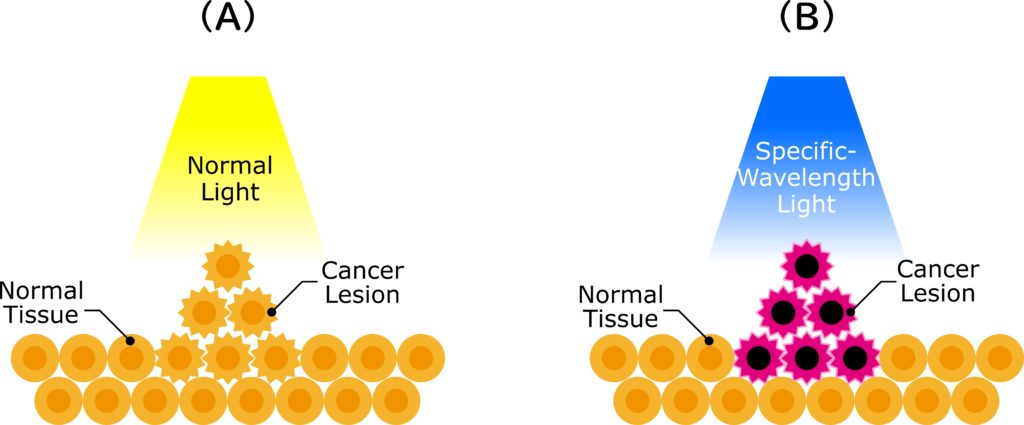
Two operational diagnosis methods that make it easier to detect cancers when performing an endoscopic resection of the bladder cancer are now available: narrow-band imaging (NBI) by which it is easier to see blood vessels in order to detect cancer using two specific wavelengths of light; and photodynamic diagnosis (PDD) that makes cancer cells glow red under a specific wavelength of light (blue) and a medical agent. (Both NBI and PDD are recommended by the Japanese Urological Association.)
NBI(narrow band imaging)
Many cancers induce the growth of a large number of blood vessels. Cancer in the bladder also has an abundance of thin blood vessels surrounding it. NBI is a technology that enhances blood vessels and reveals small changes around a cancer by applying two specific wavelengths of light that are absorbed by the hemoglobin in blood. As a result, the location of the cancer can be estimated without using a specific drug, and small cancers that are difficult to find using normal light observation can be observed.
Photodynamic diagnosis (PDD)
PDD is a technology that makes use of the specific properties of cancer cells by accumulating a particular substance that emits a red fluorescence when irradiated with light of a given wavelength, and as a result only cancer cells glow red. In this way, it is easier to distinguish between normal tissue and cancerous lesions. This operational diagnostic method enables the detection of cancer lesions with high accuracy (Fig. 4). This technology revolutionizes the detection of small and flat cancers that are difficult to see under normal light, and at the same time enables these cancers to be resected under an endoscope. The use of this technology is strongly recommended by the Japanese Urological Association.
PDD is a new technology, which can only be implemented at medical institutions that have a specified endoscope system. In addition, operation of PDD is dependent on the medicine currently taken by the patient, concurrent illnesses, medical history, and complications.
(Supervised by Dr. Yoshihiko Hirao, Director Emeritus, Osaka Gyoumeikan Hospital, Professor Emeritus, Nara Medical University)